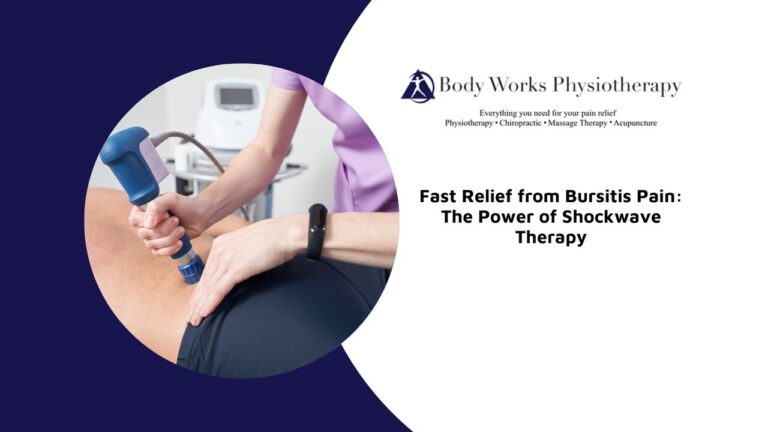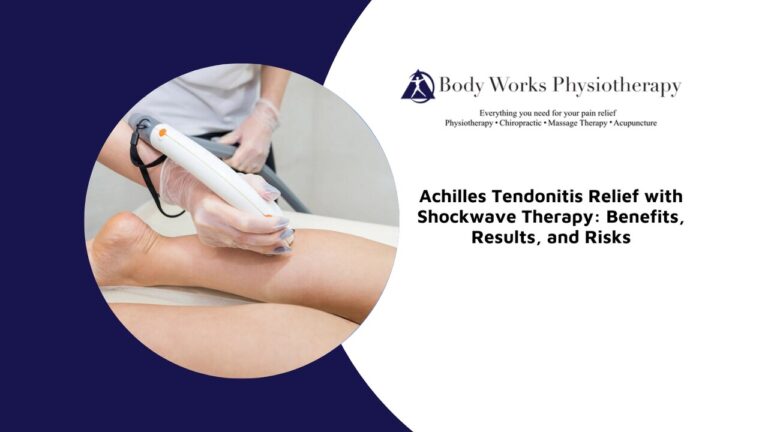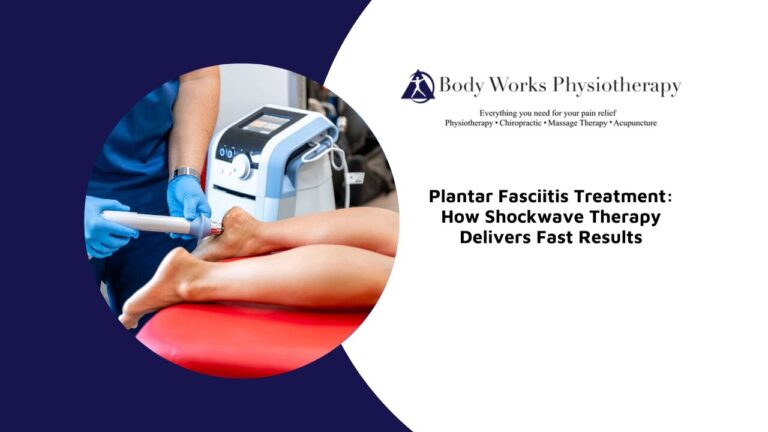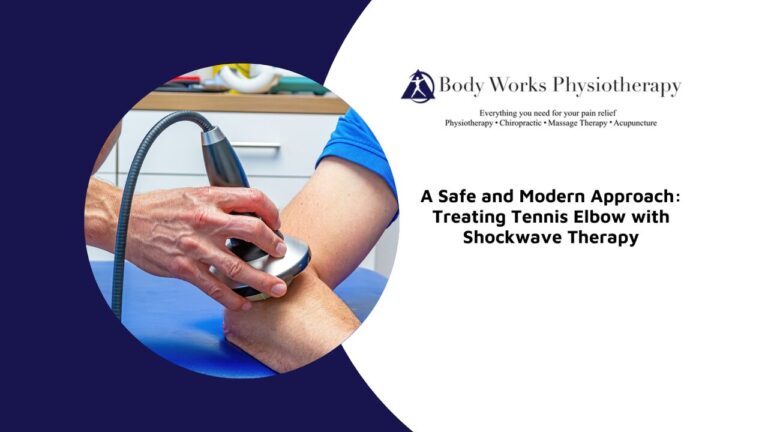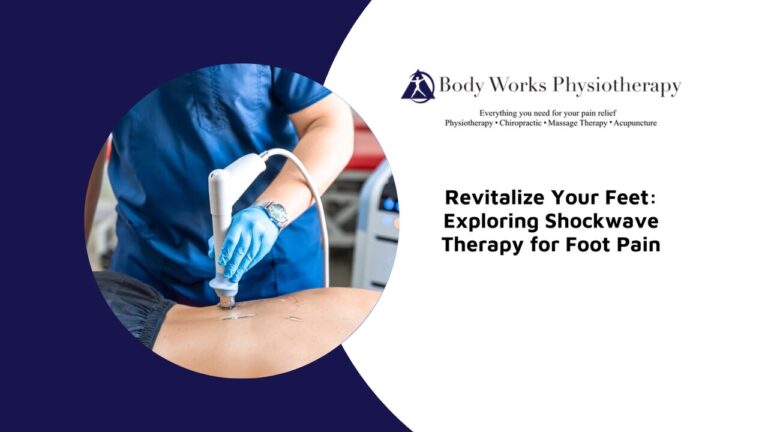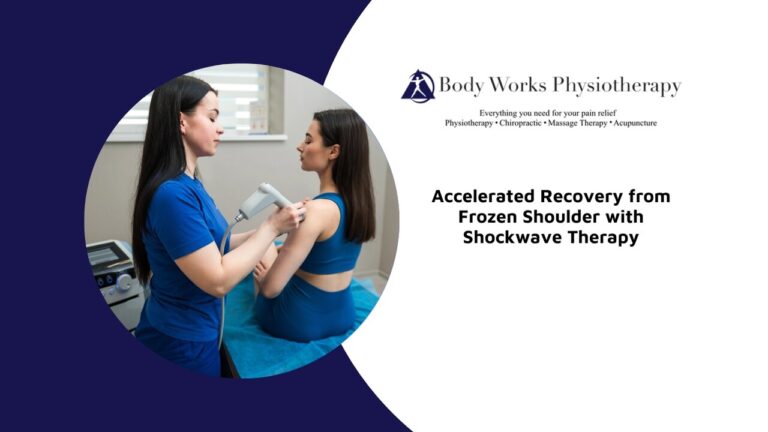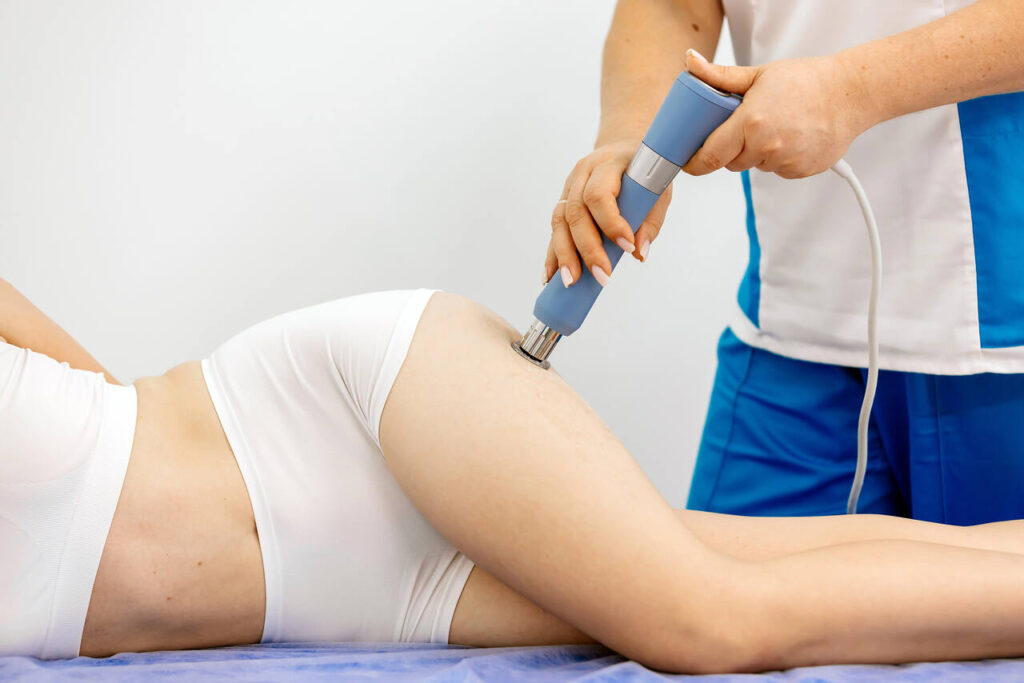
Tendonitis can be a frustrating and persistent condition, making everyday activities painful and limiting movement. While rest, physiotherapy, and medication can offer relief, some cases require a more targeted approach. Shockwave therapy is an innovative, non-invasive treatment that uses acoustic waves to stimulate healing, reduce inflammation, and break down scar tissue in injured tendons. In this blog, we’ll explore how shockwave therapy works for tendonitis, its effectiveness, what to expect during a session, and how it compares to other tendonitis treatments.
Understanding Shockwave Therapy for Tendonitis
Shockwave therapy is a non-invasive treatment that uses acoustic waves to promote healing and relieve pain in tendonitis.
- Stimulates Blood Flow: Increases circulation to the affected tendon, accelerating the healing process.
- Reduces Inflammation: Helps decrease swelling and irritation in the damaged tissue.
- Breaks Down Scar Tissue: Improves flexibility and mobility by reducing fibrotic adhesions.
- Triggers Natural Repair Mechanisms: Encourages the body to regenerate cells and restore tendon function.
By addressing the underlying cause of tendonitis, shockwave therapy provides long-term relief and promotes recovery.
How Effective Is Shockwave Therapy in Relieving Tendonitis Pain?
Shockwave therapy has proven to be an effective treatment for tendonitis, particularly for individuals with chronic cases that have not responded to other treatments. Studies indicate that success rates range between 60% and 90%, depending on the severity of the condition and adherence to the treatment plan. Many people notice significant pain relief and improved mobility after just a few sessions.
Because it is a non-invasive approach, shockwave therapy provides an alternative to medication, injections, or surgery, making it an appealing option for those seeking natural pain relief. By stimulating the body’s natural healing response, it helps break down scar tissue, reduce inflammation, and promote long-term recovery. When combined with proper aftercare, this treatment can significantly enhance mobility and improve overall function, allowing individuals to return to daily activities with greater ease.
Shockwave Therapy Sessions for Tendonitis: What to Expect
A shockwave therapy session is a simple procedure designed for maximum comfort and effectiveness.
- Gel Application: A conductive gel is applied to the treatment area to enhance wave transmission.
- Device Placement: A handheld applicator delivers acoustic waves to the affected tendon.
- Mild Sensations: You may feel slight pressure, tingling, or mild discomfort during the procedure.
- Short Duration: Sessions typically last between 15–30 minutes, depending on the area being treated.
- No Downtime: Most people can resume daily activities immediately after treatment.
The procedure is well-tolerated, and improvements are often noticeable within the first few sessions.
How Many Shockwave Therapy Sessions Are Needed to Treat Tendonitis?
The number of shockwave therapy sessions required varies based on the severity of the tendonitis and the individual’s response to treatment. Most people experience optimal results after three to six sessions, typically spaced about a week apart to allow for proper healing. For those with chronic or long-term tendonitis, additional sessions may be necessary to achieve lasting relief. In some cases, follow-up treatments are recommended to maintain progress and prevent flare-ups. A personalized treatment plan, tailored to the individual’s specific condition and goals, ensures the best possible outcome. By following a structured treatment schedule, individuals can maximize the benefits of shockwave therapy and experience long-term pain relief and improved tendon function.
Shockwave Therapy for Tendonitis: Possible Risks or Side Effects
Shockwave therapy is a safe and well-tolerated procedure, but minor side effects can occasionally occur.
- Mild Bruising: Some people experience slight discoloration in the treated area.
- Temporary Redness or Swelling: Localized irritation that usually subsides within a few days.
- Tenderness or Soreness: A mild aching sensation may occur as the body responds to treatment.
- Rare Discomfort: Some individuals may experience more pronounced sensitivity, which typically resolves quickly.
- Safe When Performed by Professionals: Choosing a qualified practitioner minimizes risks and ensures effectiveness.
Most side effects are minor and temporary, making shockwave therapy a low-risk treatment option.
Comparing Shockwave Therapy to Other Tendonitis Treatments
Shockwave therapy stands out as an effective alternative to traditional treatments for tendonitis.
- Non-Invasive Approach: No incisions, injections, or medications required.
- Addresses Root Cause: Unlike painkillers, it promotes actual healing rather than masking symptoms.
- Faster Recovery: Accelerates the healing process compared to rest and physiotherapy alone.
- Can Be Used with Physiotherapy: Complements rehabilitation exercises for enhanced results.
- Alternative to Surgery: Suitable for people looking to avoid invasive procedures.
For individuals struggling with persistent tendonitis, shockwave therapy offers a proven and effective solution.
Managing Tendonitis: Recommended Training Adjustments for Athletes
Athletes dealing with tendonitis need to modify their training routines to prevent further strain and promote recovery. Implementing the right adjustments can help maintain fitness while supporting tendon healing.
- Reduce Training Intensity: Scale back high-impact or repetitive movements that place stress on the affected tendon. Adjusting workout intensity and incorporating more rest days allows for recovery without losing overall conditioning.
- Incorporate Low-Impact Exercises: Activities such as swimming, cycling, or elliptical training help maintain cardiovascular fitness while minimizing strain on the tendon.
- Prioritize Warm-Ups and Cool-Downs: Dynamic stretching before workouts helps prepare the muscles and tendons for movement, while post-exercise stretching and foam rolling improve flexibility and reduce stiffness.
- Modify Strength Training: Focus on eccentric exercises, which strengthen the tendon while minimizing excessive strain. Resistance training should be controlled and progressive.
- Correct Biomechanics and Technique: Poor form can contribute to tendonitis. Working with a coach or physiotherapist to refine movement patterns can help reduce unnecessary stress on the tendons.
- Use Recovery Strategies: Ice therapy, compression, massage, and adequate rest can help manage inflammation and discomfort, promoting faster healing.
By implementing these training adjustments, athletes can continue their activities while reducing the risk of worsening tendonitis and improving long-term tendon health.
Don’t Let Pian Slow You Down
Tendonitis doesn’t have to hold you back from your daily activities and favorite sports. If traditional treatments haven’t provided the relief you need, shockwave therapy may be the solution. This advanced, non-invasive treatment can help reduce pain, improve function, and accelerate healing—without the need for medication or surgery.At Body Works Physiotherapy in Scarborough, we offer professional shockwave therapy treatments tailored to your needs. Book an appointment today and take the first step toward long-lasting relief. Contact us to learn more!

